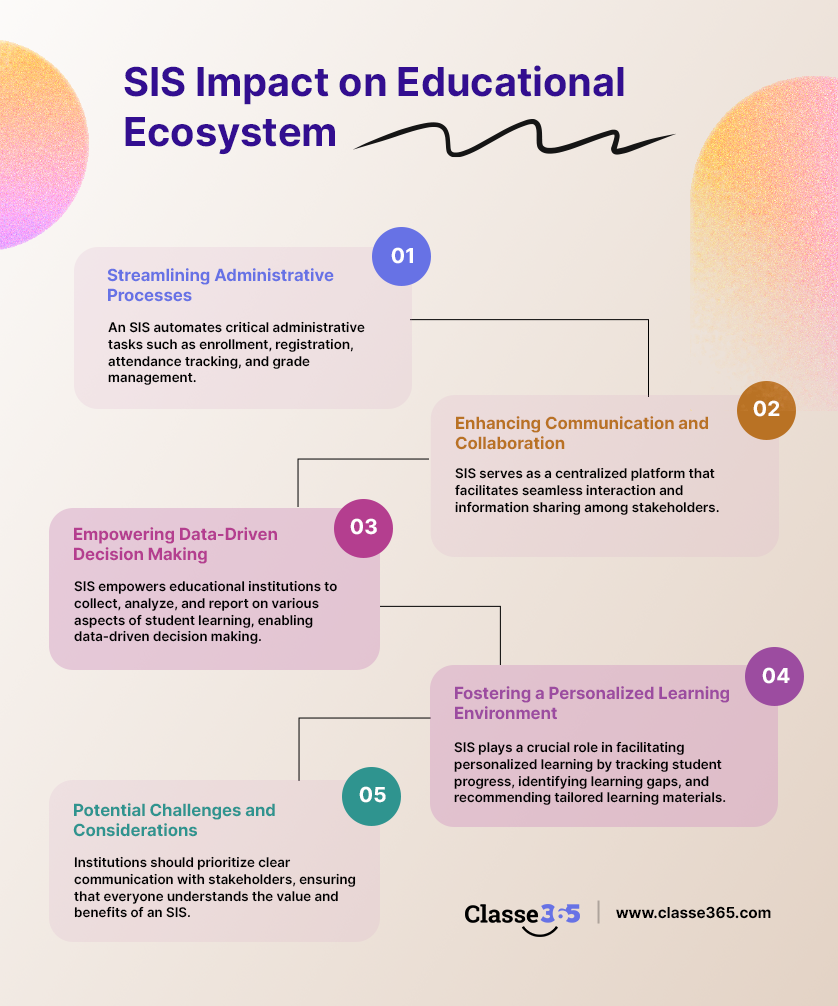In today’s rapidly evolving technological landscape, educational institutions are embracing digital solutions to enhance their operations and improve the learning experience for students. One such solution that has gained significant traction is a Student Information System (SIS). This comprehensive software platform has revolutionized the way educational organizations manage student data, streamline administrative processes, and foster a collaborative and personalized learning environment. In this blog post, we will delve into the profound impact that an Student Information System can have on the educational ecosystem of an organization, supported by relevant statistics and data.
Streamlining Administrative Processes
Managing student data manually has long been a tedious and error-prone task for educational institutions. Traditional paper-based systems often lead to inefficiencies, consuming valuable time and resources. However, with the implementation of an Student Information System, these challenges can be overcome, resulting in improved administrative efficiency.
An Student Information System automates critical administrative tasks such as enrollment, registration, attendance tracking, and grade management. By digitizing these processes, educational institutions can significantly reduce the workload for staff members, allowing them to allocate more time to strategic initiatives aimed at improving the overall educational experience for students. With streamlined administrative processes, institutions can improve operational efficiency and focus on providing high-quality education.
Enhancing Communication and Collaboration
Effective communication and collaboration among students, parents, teachers, and administrators are essential for fostering an inclusive and supportive educational community. An Student Information System serves as a centralized platform that facilitates seamless interaction and information sharing among stakeholders.
Through features like online portals, messaging systems, and email notifications, an Student Information Systemenables important announcements, progress reports, and updates to be easily communicated to the relevant parties. This level of transparency improves parental engagement, as parents can stay informed about their child’s academic progress and actively participate in their educational journey. Moreover, it fosters better collaboration among stakeholders, creating a cohesive educational ecosystem where everyone can work together towards the common goal of student success.
Empowering Data-Driven Decision Making
Data plays a pivotal role in understanding student performance and the effectiveness of educational programs. An Student Information System empowers educational institutions to collect, analyze, and report on various aspects of student learning, enabling data-driven decision making.
By leveraging advanced features like data visualization tools and student performance dashboards, educators and administrators can gain valuable insights into student progress, identify areas for improvement, and make informed decisions about curriculum development and resource allocation. These data-driven insights enable institutions to tailor their educational offerings based on student needs, implement personalized learning interventions, and ensure that every student receives the support required to succeed academically.
Fostering a Personalized Learning Environment
Personalized learning, which tailors educational experiences to individual student needs, has gained significant momentum in recent years. An Student Information System plays a crucial role in facilitating personalized learning by tracking student progress, identifying learning gaps, and recommending tailored learning materials.
Through the capabilities of an SIS, educators can create a customized learning experience for each student, enhancing engagement, motivation, and academic achievement. By monitoring student progress and quickly identifying areas where additional support is required, educators can intervene promptly and provide targeted assistance. This personalized approach to learning fosters a supportive educational environment where students feel valued and empowered to reach their full potential.
Potential Challenges and Considerations
While the benefits of implementing an SIS are undeniable, educational institutions should be aware of potential challenges and considerations. Cost, data security, and user adoption are among the key factors that require careful attention.
To overcome these challenges, institutions should prioritize clear communication with stakeholders, ensuring that everyone understands the value and benefits of an SIS. Comprehensive training programs should be implemented to familiarize users with the system’s functionalities and encourage adoption. Choosing a user-friendly SIS solution can also contribute to a smooth implementation process and minimize potential hurdles.
The integration of a Student Information System (SIS) has a profound impact on the educational ecosystem of an organization. By streamlining administrative processes, enhancing communication and collaboration, empowering data-driven decision making, and fostering personalized learning environments, an SIS becomes a catalyst for positive change. Educational institutions can optimize their operations, improve student outcomes, and create a dynamic and engaging learning environment.

As technology continues to drive innovation, it is imperative for educational organizations to explore and invest in an SIS to unlock the full potential of their educational ecosystem. By leveraging the power of an SIS, institutions can revolutionize their administrative processes, facilitate effective communication and collaboration, empower data-driven decision making, and foster a personalized learning environment for their students. With the support of relevant statistics and data, educational organizations can confidently embrace an SIS and embark on a journey towards transformative educational excellence.
